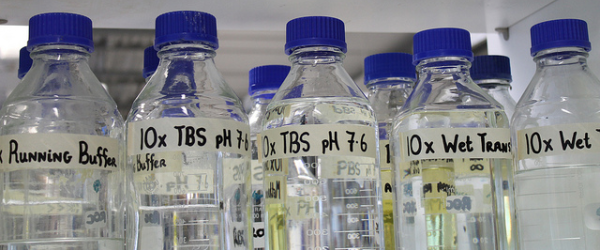Anyone who is remotely associated with any kind of drug development program knows how challenging the field is. Not only is the process complex and time consuming, but it also requires the concerted effort of experts from various disciplines such as chemistry, biology, microbiology, pharmacology, toxicology, etc. Whenever such collaborations are not possible, you are expected to cover it all and become a jack of all trades!!
As I have been through the situation myself, I am writing this article for those ill-fated graduate students who suffer the same destiny. I want to help you in your drug discovery journey.
In this article I provide details of how ADMET (absorption, distribution, metabolism, elimination and toxicity) will help you in your drug discovery. But first, let’s discuss the difference between the drug discovery and drug development procedures.
Drug Discovery and Development
In moving from lab to market, a “chemical compound” crosses a number of barriers and bottlenecks in the form of various tests, trials and regulatory affairs. For example, ADC analysis (antibody-drug conjugates) is quite complicated and requires a lot of testing. It’s only when all the requirements are met that a compound becomes a “drug”. This entire procedure can be divided into two stages: drug discovery and development.
Drug Discovery
The drug discovery phase is also called the ‘preclinical’ phase. As the name suggests, the drug discovery phase occurs prior to the initiation of clinical trials and consists of in-vitro, ex-vivo and in-vivo studies including pharmacology and toxicity studies.
Drug Development
The drug development stage occurs after a ‘drug candidate’ enters into clinical studies. All the studies that are carried out to determine efficacy and safety on patients, as well as healthy volunteers, constitute drug development.
So it is the entry point into clinical trials that separates the two phases. While the drug discovery phase occurs prior to the initiation of clinical trials, development occurs after a molecule enters into clinical trials. Sounds good enough! But here lies the catch…
Very few molecules that enter the drug discovery phase reach the drug development phase and even if they do, there’s no guarantee they will become a successful drug.
For every 5,000–10,000 chemical compounds that enter the drug discovery and development pipeline, only 1–2 compounds ultimately make it to the market, and that can take 10–15 years!
So the question now arises as to why the attrition rate is so high? How can it be reduced? How should you decide which lead molecules should be taken up to the development phase and which should be left out?
How should one actually move forward from drug discovery to drug development?
Reasons for Failure
Let us first try and understand the reasons for failure of a drug candidate. Failure occurs because of a number of factors such as:
- Toxicity
- Safety issues
- Poor pharmacokinetic properties
- Selection of inappropriate drug targets, etc.
But in my opinion, it is the pharmacokinetic (PK) and pharmacodynamic (PD) properties that cause most drug candidates to fail.
What Next?
PK and PD are nothing but the science of what a drug does to the body and in return, how the body acts to modify the drug.
So the next obvious question would be how can we determine these properties? How do you decide if a compound is good or bad, based on these results?
Solution
The answer is in-silico ADMET (absorption, distribution, metabolism, elimination and toxicity) predictions.
In-silico ADMET uses computer simulations and modeling to predict how a compound will behave in the body. It is an alternative to in vivo testing and can be used in the early stages of drug discovery and development. When used effectively, in-silico ADMET saves time and resources by weeding out and prioritizing potentially successful candidates from tens of thousands of compounds. This reduces the number of compounds that enter the drug development phase. It can also be used to direct chemical modification of compounds to increase their efficacy and pinpoint known drugs for repurposing.
There are several steps to follow for successful application of an in-silico ADMET study. The analysis of various parameters helps predict pharmacological activity of a molecule and will also interpret the success of the molecule as a ‘drug’.
Here’s a step-wise guide as to how to proceed:
- Draw the chemical structures of the test molecules using any ChemDRAW software and convert the files into .mol format
- Choose 2-3 standard drugs to serve as positive controls. These will be useful for analyzing your obtained results.
- Carry out ADMET predictions using your favorite ADMET program. You can purchase one or use a free online version. Programs you can try include:
- Note down the values of the different parameters and then compare and analyze the results.
The ‘drug-likeness’ of a molecule is given by the ‘drug-likeness’ score of a compound. The higher the ‘drug-likeness’ score of a compound, the better the compound is. Other important parameters to consider include:
- aqueous solubility
- lipophilicity and
- toxicity, etc.
As a rule of thumb, the molecular weight must be less than 500 and logP (lipophilicity) less than 5.
Tip: Analyze the compounds using more than one program and if possible, at least 2 times on one particular set of compounds to make sure that no manual errors were made. Different software may give slightly different results, but you will have more confidence if the results are generally same.
In-silico ADMET is very handy when choosing molecules for the drug development phase. You can easily choose those having favorable properties while ruling the rest out. Even though the predictions don’t always come true, this approach increases the probability of getting more lead compounds into the development pipeline.
Once you’ve selected your potential candidates, you’ll be able to move on to drug screening and ADC characterization in cells.







